CAA News Today
Craig Houser, author of Chapter 5: “The Changing Face of Scholarly Publishing: CAA’s Publication Program.”
posted by CAA — December 09, 2021
As part of CAA’s 10-year anniversary celebration of its publication The Eye, the Hand, the Mind: 100 Years of the College Art Association, chapter authors reflect on their contributions and how their impressions of the field have changed. Our second video in the series features Craig Houser, who wrote Chapter 5, “The Changing Face of Scholarly Publishing: CAA’s Publication Program.”
Craig Houser is the director of the MA in Art History and its concentration in Art Museum Studies at the City College of New York. His scholarship has addressed institutional politics related to studio art and art history, as well as issues in gender and sexuality in modern and contemporary art.
CAA 2021: A look back on the past year’s programming, publications, and opportunities
posted by CAA — November 30, 2021
CAA has produced this reel with a compilation of events, scholarship, programs, and initiatives CAA from the last year. See below for a full list of each item (in order of appearance in the video) with links to learn more.
Programming:
CAA’s first virtual Annual Conference
Mariam Ghani in conversation with Laura Anderson Barbata
In Conversation with Dr. Nancy Odegaard
Theresa Avila, Annual Conference Program Chair in conversation with Meme Omogbai
An Inaugural Evening with CAA Distinguished Awardees and Artists
CAA Then & Now: Reflections on the Centennial Book and the Next Century
Karen Leader, author of Chapter 12: Advocacy
Opportunities:
Publication, travel, and support grants
Publications and Publications Programming:
Artist Project, Elana Mann for Art Journal Open
Roundtable discussion for Art Journal Open, Holding Space…
Art Journal and The Art Bulletin
caa.reviews book and exhibition reviews
caa.reviews’s dissertation roster, 2020
Global Programs
CAA-Getty International Program
CAA-Getty 10-Year International Program online publication
Podcasts
CAA Conversations by CAA’s Education Committee
CAA’s 110th Annual Conference will take place in Chicago from February 17-19, followed by virtual live sessions to be held in Zoom from March 3-5. For more information and to register go to this link.
Ellen Levy, Author of Chapter 8: Art in an Academic Setting
posted by CAA — November 29, 2021
As part of CAA’s 10-year anniversary celebration of its publication The Eye, the Hand, the Mind: 100 Years of the College Art Association, chapter authors reflect on their contributions and how their impressions of the field have changed. Our second video in the series features Ellen Levy, who wrote Chapter 8, “Art in an Academic Setting: Contemporary CAA Exhibitions.”
Ellen K. Levy, PhD, is a multimedia artist and writer known for exploring art, science and technology interrelationships since the mid-1980s. Levy highlights their importance through exhibitions, educational programs, publications and curatorial opportunities. Her graduate studies were at the School of the Museum of Fine Arts, Boston following a B.A. from Mount Holyoke College in Zoology. She was President of the College Art Association (2004-2006) before earning her doctorate (2012) from the University of Plymouth (UK) on the art and neuroscience of attention. She then was Special Advisor on the Arts and Sciences at the Institute for Doctoral Studies in the Visual Arts. She was a Distinguished Visiting Fellow in Arts and Sciences at Skidmore College (1999) and taught many transdisciplinary classes and workshops (e.g., the New School, Cooper Union, Brooklyn College, Banff). She was recipient of an AICA award and an arts commission from NASA following a solo exhibition at the National Academy of Sciences (NAS) (1985).
She has exhibited her art internationally and in such landmark exhibitions as Weather Report (Boulder Museum, cur Lucy Lippard) and Gregor Mendel: Planting the Seeds of Genetics (Field Museum, Chicago, adv. Martin Kemp). Levy has published widely on art and complex systems. With Berta Sichel, she guest edited and contributed to CAA’s special issue of Art Journal (spring 1996), likely the first widely distributed academic publication on contemporary art and the genetic code. With Charissa Terranova, she is co-editor of D’Arcy Wentworth Thompson’s Generative Influences in Art, Design: From Forces to Forms (2021, Bloomsbury Press). Levy has also curated a related exhibition for Pratt Manhattan’s gallery. Levy and Barbara Larson co-edit the “art and science since 1750” book series of Routledge Press. Levy and Patricia Olynyk co-direct the NY LASER program, a central initiative of Leonardo/ISAST. She was twice an invited participant in Watermill’s Art and Consciousness Workshop, led by stage director and playwright, Robert Wilson.
A letter from CAA’s Executive Director
posted by CAA — October 28, 2021
| Dear CAA members,
Since March of 2020, we have been continually navigating through change—both internally and externally––at CAA. We’ve used this time to gather information from membership and listen to constituencies to position CAA for the future. I am writing to address the matter of a publications restructuring document that was recently shared publicly. The document was created as a preliminary proposal meant for internal discussion following a first-stage period of discovery. The document remains a work in progress. Our next steps in the process will be:
CAA values the voices and expertise of our community and respective constituencies. I will continue to create ongoing opportunities for engagement and dialogue.
Thank you for your continued support. I look forward to providing you with a more detailed monthly report of CAA’s activities in the coming week. In the meantime, please feel free to contact CAA at programs@collegeart.org to share any further comments.  Meme Omogbai
Executive Director and CEO
|
Announcing the Appointment of Two New Editors for CAA Publications
posted by CAA — July 23, 2021
We’re pleased to announce the appointment of two new editors for CAA publications: Christy Anderson, was selected to be Editor-in-Chief of The Art Bulletin. Balbir Singh will take the post as Reviews Editor of Art Journal. They begin their three-year terms July 1, 2022. Learn more about their work below.
EDITOR BIOGRAPHIES
Christy Anderson | Incoming Editor-in-Chief of The Art Bulletin
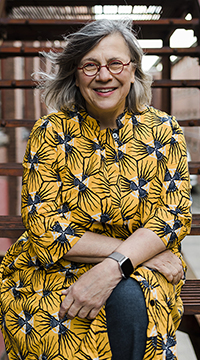 Christy Anderson is an architectural historian with a special interest in the buildings of Renaissance and Baroque Europe. Professor Anderson has taught at Yale University, the Courtauld Institute, MIT, and the University of Toronto. At Yale she received a Morse Faculty Fellowship as well as numerous teaching prizes. She received her Ph.D. from the School of Architecture at the Massachusetts Institute of Technology. As a Kress Fellow at the Courtauld Institute of Art and later as a Research Fellow at Worcester College, Oxford University, she studied the annotations made by the English architect Inigo Jones (1573–1652) in his collection of treatises and humanist literature. This work on literacy, architectural language, and the construction of the professional architect appeared in her book Inigo Jones and the Classical Tradition (Cambridge, 2006).
Christy Anderson is an architectural historian with a special interest in the buildings of Renaissance and Baroque Europe. Professor Anderson has taught at Yale University, the Courtauld Institute, MIT, and the University of Toronto. At Yale she received a Morse Faculty Fellowship as well as numerous teaching prizes. She received her Ph.D. from the School of Architecture at the Massachusetts Institute of Technology. As a Kress Fellow at the Courtauld Institute of Art and later as a Research Fellow at Worcester College, Oxford University, she studied the annotations made by the English architect Inigo Jones (1573–1652) in his collection of treatises and humanist literature. This work on literacy, architectural language, and the construction of the professional architect appeared in her book Inigo Jones and the Classical Tradition (Cambridge, 2006).
Learn more about The Art Bulletin.
Balbir Singh | Incoming Reviews Editor of Art Journal
 Balbir Singh’s scholarship focuses on the convergence of racial, gendered, and religious embodiment, with migration and policing under violent conditions of imperial and domestic security technologies. She is at work on her first book, “Militant Bodies: Violence and Visual Culture under Islamophobia,” which is rooted in questions that center post-9/11 racial and religious hyper-policing of Muslims and Sikhs, especially as they relate to bodily comportment and the donning of religious garments. Additionally, she is beginning research on a second book project — “Whose Terror? Vexed Attachments and the Contradictions of Freedom.”
Balbir Singh’s scholarship focuses on the convergence of racial, gendered, and religious embodiment, with migration and policing under violent conditions of imperial and domestic security technologies. She is at work on her first book, “Militant Bodies: Violence and Visual Culture under Islamophobia,” which is rooted in questions that center post-9/11 racial and religious hyper-policing of Muslims and Sikhs, especially as they relate to bodily comportment and the donning of religious garments. Additionally, she is beginning research on a second book project — “Whose Terror? Vexed Attachments and the Contradictions of Freedom.”
Meet the Spring 2021 Millard Meiss Publication Fund Grant Recipients
posted by CAA — June 24, 2021

Mbanza Kongo (São Salvador), capital of the Kingdom of Kongo, mid-18th century
MEET THE GRANTEES
Twice a year, CAA awards grants through the Millard Meiss Publication Fund to support book-length scholarly manuscripts in the history of art, visual studies, and related subjects that have been accepted by a publisher on their merits, but cannot be published in the most desirable form without a subsidy.
Thanks to the generous bequest of the late Prof. Millard Meiss, CAA began awarding these publishing grants in 1975.
Spring 2021 Grantees
Annette de Stecher, Wendat Women’s Art, McGill-Queen’s University Press
Sylvia Houghteling, The Art of Cloth in Mughal India, Princeton University Press
Pamela Karimi, Alternative Iran: Radical Spatial Strategies in Contemporary Art Practice, Stanford University Press
Meredith Martin and Gillian Weiss, The Sun King at Sea: Maritime Art and Galley Slavery in Louis XIV’s France, Getty Research Institute
Ying-Chen Peng, Artful Subversion: Empress Dowager Cixi’s Image Making in Art, Yale University Press
Yael Rice, Agents of Insight: Artists, Books, and Painting in Mughal South Asia, University of Washington Press
Sarah-Neel Smith, Metrics of Modernity: Art and Development in Postwar Turkey, University of California Press
Bert Winther-Tamaki, Tsuchi: An Environmental History of Contemporary Japanese Art, University of Minnesota Press
Announcing the Appointment of Three New Editors for CAA Publications
posted by CAA — October 01, 2020
We’re pleased to announce the appointment of three new editors for CAA publications: editor designate Eddie Chambers, who will take up his post as Editor-in-Chief of Art Journal, July 2021 – June 2024; Julie Nelson Davis, current Editor-in-Chief of caa.reviews, July 2020 – June 2023; and editor designate Stephanie Porras, who will take up her post as Reviews Editor of The Art Bulletin, July 2021 – June 2024. Learn more about their work below.
EDITOR BIOGRAPHIES
Eddie Chambers | Incoming Editor-in-Chief of Art Journal, July 2021 – June 2024
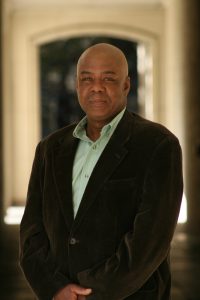 Eddie Chambers was born in Wolverhampton, England. He gained his PhD from Goldsmiths College, University of London in 1998, for his study of press and other responses to the work of a new generation of Black artists in Britain, active during the 1980s. He joined the Department of Art and Art History at the University of Texas at Austin in January 2010 where he is now a Professor. His books include Things Done Change: The Cultural Politics of Recent Black Artists in Britain (Rodopi Editions, Amsterdam and New York, 2012), Black Artists in British Art: A History Since the 1950s, (I. B. Tauris, London and New York, 2014, reissued 2015), and Roots & Culture: Cultural Politics in the Making of Black Britain, published 2017 (I. B. Tauris/Bloomsbury). He is the editor of the recently-published Routledge Companion to African American Art History. His forthcoming book is World is Africa: Writings on Diaspora Art (Bloomsbury, 2021).
Eddie Chambers was born in Wolverhampton, England. He gained his PhD from Goldsmiths College, University of London in 1998, for his study of press and other responses to the work of a new generation of Black artists in Britain, active during the 1980s. He joined the Department of Art and Art History at the University of Texas at Austin in January 2010 where he is now a Professor. His books include Things Done Change: The Cultural Politics of Recent Black Artists in Britain (Rodopi Editions, Amsterdam and New York, 2012), Black Artists in British Art: A History Since the 1950s, (I. B. Tauris, London and New York, 2014, reissued 2015), and Roots & Culture: Cultural Politics in the Making of Black Britain, published 2017 (I. B. Tauris/Bloomsbury). He is the editor of the recently-published Routledge Companion to African American Art History. His forthcoming book is World is Africa: Writings on Diaspora Art (Bloomsbury, 2021).
Julie Nelson Davis | Current Editor-in-Chief of caa.reviews, July 2020 – June 2023
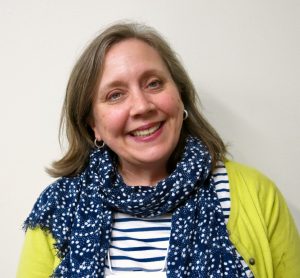
Julie Nelson Davis is Professor of the History of Modern Asian Art at the University of Pennsylvania. Recognized as one of the world’s foremost authorities on Japanese prints and illustrated books, Davis teaches a wide range of courses on East Asian art and material culture in the greater global context. After receiving her BA from Reed College, Davis completed her MA and PhD from the University of Washington and studied at Gakushūin University in Tokyo. She is author of Utamaro and the Spectacle of Beauty (Reaktion Books, 2007 and 2021), Partners in Print: Artistic Collaboration and the Ukiyo-e Market (University of Hawai’i Press, 2015), and Picturing the Floating World: Ukiyo-e in Context (in press). Davis was recently a guest curator for the Freer and Sackler Galleries for an exhibition on Utamaro (2017) and is preparing an exhibition of Japanese illustrated books at the University of Pennsylvania. She is currently working on a new project on issues of imitation, homage, and fakery in early modern Japanese art and their legacies into the present. In addition to her tenure as caa.reviews Editor-in-Chief from 2020 to 2023, Davis served as the field editor for Japanese art from 2001 to 2010 and a board member from 2007 to 2011.
Stephanie Porras | Incoming Reviews Editor of The Art Bulletin, July 2021 – June 2024
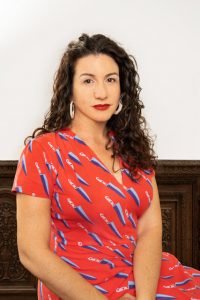 Stephanie Porras is Associate professor of Art History in the Newcomb Art Department at Tulane University, specializing in early modern art made in Northern Europe and across the Spanish world. Author of Pieter Bruegel’s Historical Imagination (Pennsylvania State University Press, 2016) and Northern Renaissance Art: Courts, Commerce, Devotion (Laurence King, 2018), Porras has also published widely on topics ranging from Albrecht Dürer’s drawings to Hispano-Philippine ivories. Her current book project, The First Viral Images considers the mobility of early modern artworks and their role in processes of globalization, and has been supported by fellowships at the New York Public Library, the Sterling and Francine Clark Art Institute, and the Center for Advanced Study in the Visual Arts at the National Gallery of Art.
Stephanie Porras is Associate professor of Art History in the Newcomb Art Department at Tulane University, specializing in early modern art made in Northern Europe and across the Spanish world. Author of Pieter Bruegel’s Historical Imagination (Pennsylvania State University Press, 2016) and Northern Renaissance Art: Courts, Commerce, Devotion (Laurence King, 2018), Porras has also published widely on topics ranging from Albrecht Dürer’s drawings to Hispano-Philippine ivories. Her current book project, The First Viral Images considers the mobility of early modern artworks and their role in processes of globalization, and has been supported by fellowships at the New York Public Library, the Sterling and Francine Clark Art Institute, and the Center for Advanced Study in the Visual Arts at the National Gallery of Art.
Serve on a CAA Jury and Provide Support to the Field
posted by CAA — June 24, 2020
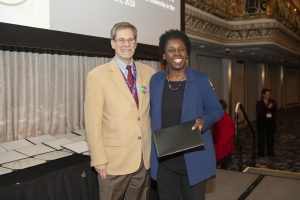
Former CAA Interim Director David Raizman and Denise Murrell, who received the Alfred H. Barr Jr. Award for Smaller Museums, Libraries, Collections, and Exhibitions for her catalog Posing Modernity: The Black Model From Manet and Matisse to Today, at the 2020 Annual Conference in Chicago. Photo: Stacey Rupolo
CAA invites nominations and self-nominations for individuals to serve on our Awards for Distinction, Publication Grant, Fellowship, and Travel Grant juries. Terms begin August 2020.
Candidates must possess expertise appropriate to the jury’s work and be current CAA members. They should not hold a position on a CAA committee or editorial board beyond May 31, 2020. CAA’s president and vice president for committees appoint jury members for service.
Awards for Distinction Juries
CAA has vacancies in ten of the fourteen juries for the annual Awards for Distinction for three years (2020–23). Terms begin in August 2020; award years are 2021–23.
- Alfred H. Barr Jr. Award for museum scholarship in the history of art/Alfred H. Barr Jr. Award for Smaller Museums, Libraries, Collections, and Exhibitions for museum scholarship in the history of art published by smaller institutions: two vacancies
- Frank Jewett Mather Award for art criticism: two vacancies
- Charles Rufus Morey Book Award for non-catalogue books in the history of art: one vacancy
- Arthur Kingsley Porter Prize for articles written by younger scholars in The Art Bulletin: one vacancy
- Artist Award for Distinguished Body of Work: two vacancies
- Distinguished Artist Award for Lifetime Achievement: one vacancy
- Distinguished Feminist Awards for Scholars and Artists: one vacancy
- Distinguished Teaching of Art History Award: one vacancy
- Excellence in Diversity Award: four vacancies
Publication Grant Juries
CAA has vacancies on our Millard Meiss Publication Fund grant jury for four years (2020–24) and the Terra Foundation for American Art Publication Grant jury for one year (2020-21).
- Millard Meiss Publication Fund: three vacancies
- Terra Foundation for American Art Publication Grant: one vacancy
Professional Development Fellowship Juries
CAA has vacancies on our Professional Development Fellowship juries for three years (2020–23). Terms begin August 2020.
- Professional Development Fellowship in Visual Arts: three vacancies
- Professional Development Fellowship in Art History: two vacancies
Travel Grant Juries
CAA has vacancies on our Art History Fund for Travel to Special Exhibitions jury for three years (2020–23). Terms begin August 2020.
- Art History Fund for Travel to Special Exhibitions: two vacancies
HOW TO APPLY
Nominations and self-nominations should include a brief statement (no more than 150 words) outlining the individual’s qualifications and experience and a CV (an abbreviated CV no more than two pages may be submitted). Please send all materials by email to Cali Buckley (cbuckley@collegeart.org), CAA grants and special programs manager; submissions must be sent as Microsoft Word or Adobe PDF attachments.
For questions about jury service and responsibilities, contact Tiffany Dugan (tdugan@collegeart.org), CAA director of programs and publications.
Deadline: July 31, 2020
An Interview with Nicole Archer, Editor-in-Chief of Art Journal Open
posted by CAA — June 15, 2020
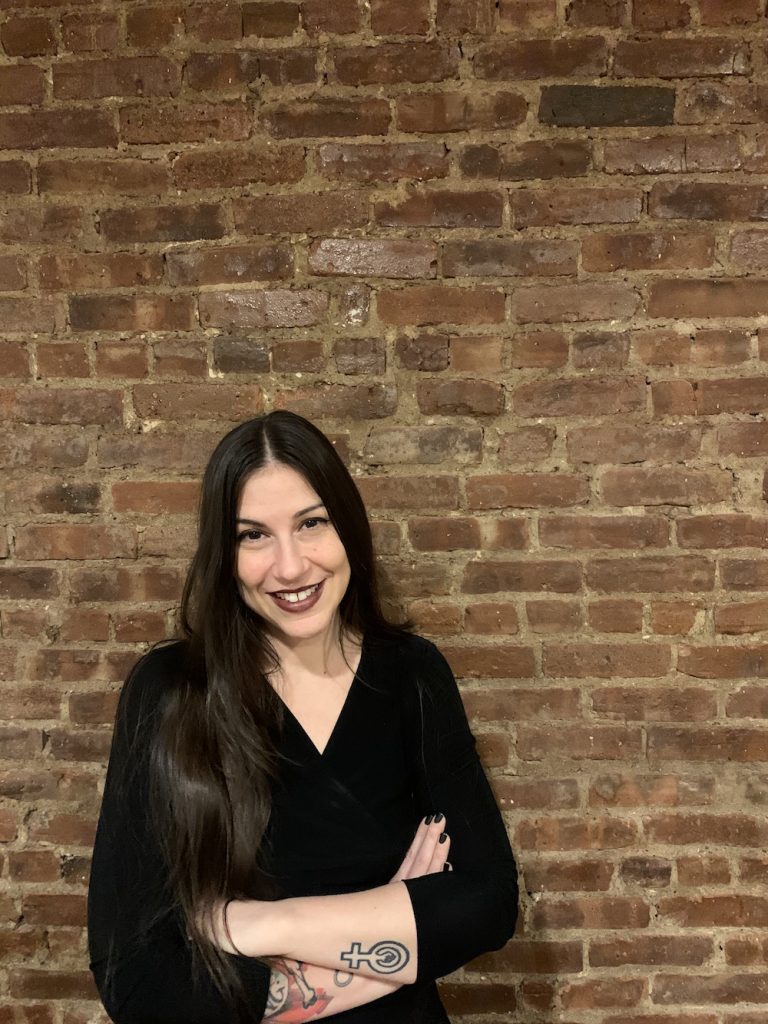
Nicole Archer.
We’re delighted to introduce readers to Nicole Archer, the current Editor-in-Chief of Art Journal Open (AJO), CAA’s online forum for the visual arts that presents artists’ projects, conversations and interviews, scholarly essays, and other forms of content from across the cultural field. Founded in 2012 as an open-access affiliate of Art Journal, Art Journal Open has been independently edited since 2014. It remains open access and is always free to explore.
Nicole Archer researches contemporary art and design, with an emphasis in textile and garment histories. She is an Assistant Professor in the Department of Art and Design at Montclair State University, where she extends this research through a teaching practice that encourages students to explore politics and aesthetics via close examinations of style, embodiment, and desire.
Amidst the end of the academic year, we corresponded with her over email to learn more about her research, her thoughts on the impact of COVID-19, and her aspirations for Art Journal Open.
Where are you from originally?
I was born in Brooklyn and raised mainly in South Florida, but I spent most of my adult life in San Francisco. In 2018, I returned to New York City.
What pathways led you to the work you do now?
My path has been shaped by a long line of committed feminist art historians, theorists, and activists who have inspired me to pursue work that is wildly curious, ethically responsible, and politically committed to issues of social justice. This, coupled with the fact that I started my college career in the mid-1990s, when the field of Visual Studies was demanding that Art History be held accountable for the role it played in supporting certain cultural hegemonies. It was a time when we were recognizing the benefit that many art historical methods could bring to critical cultural studies (and vice versa).
When did you first become a CAA member?
I have been a CAA member since 2011, but I was an avid reader of Art Journal and The Art Bulletin long before that (thanks to my library access).
What are you working on or thinking about currently?
I am currently finishing a book manuscript that considers how textiles (our key mediums of comfort and security) have been strategically manipulated over the last two decades to aid in the systematic reshaping of what constitutes “legitimate” versus “illegitimate” forms of state violence. The book tells interwoven, materially grounded stories regarding global arts and design practice, on the one hand, and military, police, and governmental action, on the other, to theorize how feelings of insecurity are produced, aesthetically.
What are your thoughts on the impact of COVID-19 on the work you do? On the field?
I think the current pandemic makes two things particularly clear. First, it highlights the important role that art and design can play in helping a society understand (and bear) emergent and acutely difficult circumstances. From movie marathons, artist talks, and book readings that we have enjoyed during our nights spent ‘sheltering in place,’ to the protest banners, photographs, and balcony performances that have led our communities towards acts of collective care and solidarity with one another.
Second, COVID-19 puts the varied inequities that underwrite the field in high relief. It makes the economic precarity of so many cultural workers glaringly obvious, and it forces us to recognize how undervalued cultural work actually is. We need to ask why we have allowed the arts to become so defunded and privatized (despite the social value it clearly delivers). Calls for austerity are circulating, and we know this means further cuts to already underfunded public arts initiatives. We need to resist this and seize this moment as an opportunity to insist on our value. We need to stop undercutting ourselves and our peers, and refuse to accept the exploitation of adjunct professors and graduate student teachers. We must do this as we push against the increasingly prohibitive costs of arts education.
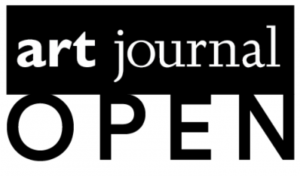 What led you to be interested in working on Art Journal Open?
What led you to be interested in working on Art Journal Open?
It is our shared responsibility, as arts and design professionals, to constantly “check” our field of practice—to find time to celebrate what we are doing well, and to redress and learn from our shortcomings. I believe this responsibility is a cornerstone of AJO’s editorial mission. Working on AJO is a unique opportunity to hold myself, and others, accountable on this front.
What is your vision for Art Journal Open during your tenure?
I hope to build on the solid foundation laid by the journal’s previous editors, and to further emphasize the open dimension of the publication’s identity—to treat “Open” as a verb, a call to action. We hope to accomplish this by leveraging the journal’s digital format, to open space for more multi-media Creative Projects, and to take advantage of our lack-of-paywall to help draw new readers to AJO and new voices to CAA.
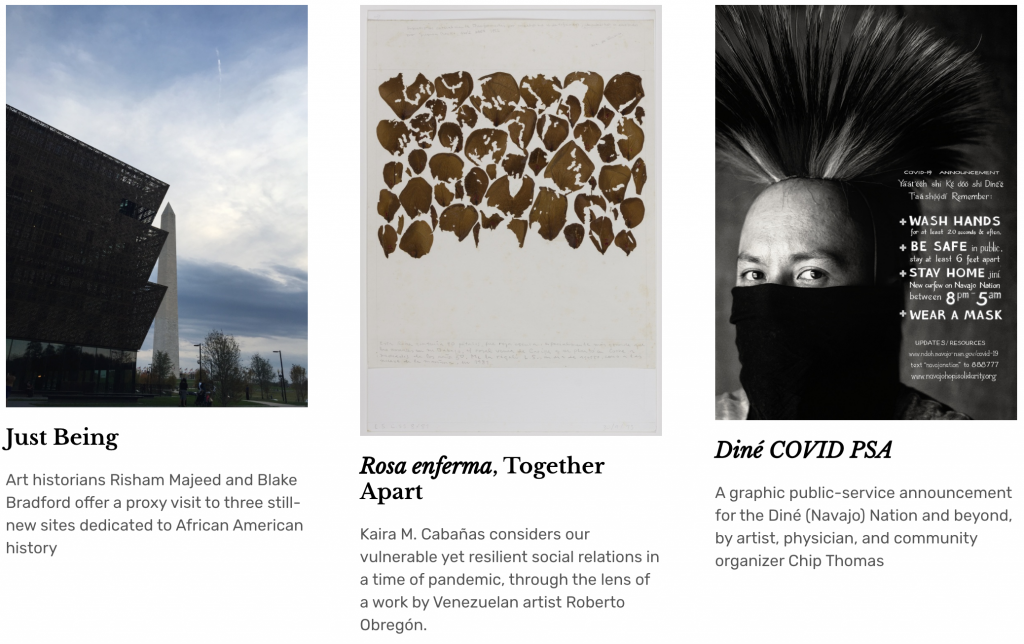
The first three pieces published after Nicole Archer fully took over as Editor-in-Chief of Art Journal Open.
What would you say is your top arts-related recommendation (book, website, resource) at the moment?
I know I am late to this, but I recently found an online radio station called NTS and it is giving me life! I miss trusting my night to a DJ, hearing a new song out of nowhere, and dancing with strangers. I am also tired of soundscapes controlled by algorithms. People should give it a listen in their studios and kitchens, and at their computers and writing desks.
View this post on Instagram
A favorite artwork?
Last year, I had the opportunity to see Sonya Clark’s Monumental Cloth, The Flag We Should Know at the Fabric Workshop and Museum in Philadelphia, and I have not been able to stop thinking about it since. Clark’s work epitomizes the important role art can play in ensuring that political discourse maintains its complexity in the face of a mediascape set on transforming these conversations into flat lines in the sand.
At the center of the exhibit was a monumental replica (15’x30’) of a white dish towel waived by Confederate troops in April 1865, before General E. Lee negotiated the terms of the Confederacy’s surrender. Displayed in a manner akin to the Star Spangled Banner (a centerpiece of the Smithsonian National Museum of American History’s collection), Monumental Cloth presented the Confederate Truce Flag as testament to a decisive moment in US history. It demanded that we ask why we do not know this flag, as a means to discuss anti-Blackness and the persistence of white supremacy in the United States. It provided a poignant, aesthetic counterstrategy to other manners of “memorializing” the Confederacy. The exhibit offered spaces of contemplation alongside opportunities for direct action—by setting-up looms that visitors could use to weave additional Truce Flag replicas, in opposition to the endless flow of commercially produced items made to bear the image of the Confederate Battle Flag.
What are you looking forward to?
Honestly, I am looking forward to the end of the Trump presidency, and to the possibility that the moment we are in could force real political and cultural change; that conversations around universal basic income and healthcare will gain traction, and that widespread recognition of the systemic racism inherent in the criminal justice system will open the door to both abolishing the prison system and defunding and demilitarizing the police that tyrannize communities of color in the US.
NICOLE ARCHER BIOGRAPHY
Nicole Archer researches contemporary art and design, with an emphasis in textile and garment histories. She is an Assistant Professor in the Department of Art and Design at Montclair State University, where she extends this research through a teaching practice that encourages students to explore politics and aesthetics via close examinations of style, embodiment, and desire.
Her work has been published in various journals, edited collections, and arts publications, including: Criticism: A Quarterly Journal for Literature and the Arts; Textile: The Journal of Cloth and Culture; Trap Door: Trans Cultural Production and the Politics of Visibility (published by the New Museum + MIT Press); Where are the Tiny Revolts? (published by the CCA Wattis Institute for Contemporary Arts + Sternberg Press); Women and Performance: A Journal of Feminist Theory.
Deadline extended: caa.reviews Seeks Field Editor for East Asian Art
posted by CAA — May 06, 2020
CAA invites nominations and self-nominations for a field editor in the area of East Asian Art for the caa.reviews Council of Field Editors for a three-year term July 1, 2020–June 30, 2023. An online journal, caa.reviews is devoted to the peer review of new books, museum exhibitions, and projects relevant to art history, visual studies, and the arts.
Working with the caa.reviews editor-in-chief, the caa.reviews Editorial Board, and CAA’s staff editor, each field editor selects content to be reviewed, commissions reviewers, and considers manuscripts for publication. Field editors for books are expected to keep abreast of newly published and important books and related media in their fields of expertise, and those for exhibitions should be aware of current and upcoming exhibitions (and other related projects) in their geographic regions.
The Council of Field Editors meets yearly at the CAA Annual Conference. Field editors must pay travel and lodging expenses to attend the conference. Members of all CAA committees and editorial boards volunteer their services without compensation.
Candidates must be current CAA members and should not be serving on the editorial board of a competitive journal or on another CAA editorial board or committee. Nominators should ascertain their nominee’s willingness to serve before submitting a name; self-nominations are also welcome. Please email a statement describing your interest in and qualifications for appointment, a CV, and your contact information to managing editor Joan Strasbaugh, jstrasbaugh@collegeart.org. In the subject line please include Field Editor, East Asian Art.
Deadline (extended): June 1, 2020


